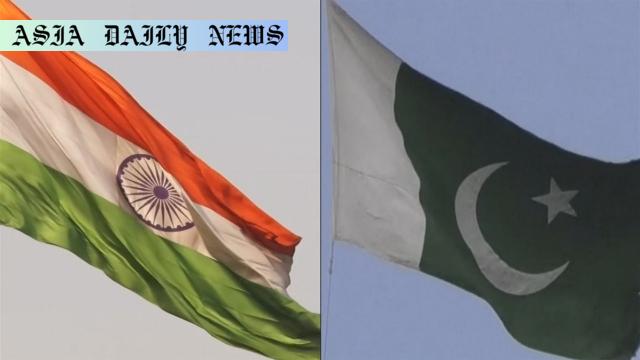Ceasefire: Indian and Pakistani military chiefs to reaffirm cease-fire efforts in the disputed Kashmir region amid tensions.
Ceasefire deal between India and Pakistan reached over the weekend.
Generals from both nations to discuss further de-escalation steps.
Tensions remain high, but talks aim for peace in Kashmir region.
US President Trump claims Washington’s role in brokering cease-fire.
Reciprocal diplomatic measures, like trade suspension, still enforced.

Introduction to the Recent Ceasefire Agreement
The protracted conflict between India and Pakistan over the contested Kashmir region has long troubled South Asia and the larger international community. Over the past weekend, however, a hopeful ceasefire agreement was brokered, potentially signaling a pause in hostilities between two nuclear-armed neighbors. While the immediate environment remains tense following recent clashes and military actions, this development is a tentative step toward stability in an otherwise volatile relationship.
Scheduled discussions between the military operations chiefs of both nations aim to solidify this ceasefire and bring greater clarity and commitment to halting further violence. This comes in the aftermath of Indian missile strikes on Pakistan-administered Kashmir, which were a response to a terrorist attack in India-controlled Kashmir resulting in significant civilian fatalities. With diplomatic relations strained and trade suspended between the two countries, the road ahead remains challenging, yet progress seems feasible.
Context: Recent Escalations and US Mediation
The escalation in Kashmir began with a devastating terrorist attack that claimed the lives of 26 tourists in India-controlled territories. This tragic incident spurred retaliation by the Indian armed forces, targeting Pakistan-administered regions with missile strikes. Pakistan responded in kind, resulting in several days of intensified conflict along the border. Such escalations have been a persistent feature of the India-Pakistan relationship due to deeply rooted disputes over Kashmir, a region claimed in full by both nations.
Amid the growing fears of a full-blown conflict, US President Donald Trump announced on social media that Washington had facilitated a ceasefire agreement. Although details surrounding the mediation remain unclear, the announcement paints a positive picture of the immediate cessation of hostilities. However, the lack of concrete mechanisms or long-term plans to address underlying tensions reveals potential vulnerabilities that could jeopardize this fragile peace.
The Path Toward Sustained Peace
While this weekend’s ceasefire offers a glimmer of hope, translating it into broader, sustainable peace between India and Pakistan will demand significant political, military, and diplomatic efforts. The Kashmir dispute, which has its roots in the 1947 Partition of British India, involves not only territorial disagreements but also deep-seated cultural, religious, and political complexities. Both nations need to reinstate trust-building measures such as reopening trade, facilitating people-to-people connections, and reviving stalled diplomatic processes.
Furthermore, international actors must play a constructive and unbiased role in preventing escalations. Organizations like the United Nations and nations with strategic leverage, such as the USA and China, have the responsibility to encourage both dialogue and de-escalation mechanisms. Crucially, the voices of the Kashmiri people must be at the forefront of any solution—ensuring that their rights, safety, and aspirations are acknowledged and respected.
Conclusion
The ceasefire agreement between India and Pakistan is a step in the right direction, but it is only the beginning of a challenging journey. With the potential for peace comes immense responsibility, as both nations face the task of overcoming decades of hostility, mistrust, and political turmoil. Whether this agreement becomes a turning point in South Asian geopolitics or another fleeting attempt at peace will depend on the commitment of all stakeholders involved. For now, the world watches with cautious optimism, waiting to see if this ceasefire can lay the groundwork for a more peaceful and stable future in the region.



Commentary
The Potential Impact of the Recent Ceasefire
The recent ceasefire agreement between India and Pakistan has certainly grabbed headlines globally, and rightfully so. It is not just a respite from the immediate violence but also provides a crucial opportunity for both nations to reflect on the path they wish to pursue moving forward. The ongoing tensions, particularly over the disputed Kashmir region, have been a source of immense suffering for over seven decades, and even a temporary halt to hostilities can make a significant difference in the lives of millions affected by this prolonged conflict.
The Role of International Mediation
US President Donald Trump’s proclamation that Washington played a role in brokering this ceasefire is notable, albeit somewhat surprising. While the United States has historically maintained diplomatic ties and strategic interests with both countries, its involvement in mediating between India and Pakistan has often been fraught with challenges. It remains to be seen how this recent intervention will be perceived domestically within both nations and whether it will lead to more constructive international involvement in mediating South Asia’s complex geopolitical landscape.
A Hopeful but Cautious Outlook
While the ceasefire undoubtedly marks a positive turning point, history warns us that such agreements can be fragile. Both governments must take active steps to ensure that the dialogue initiated through military channels is expanded into diplomatic and civilian-led initiatives. Only through such comprehensive and inclusive measures can there be any hope of breaking free from the cycle of violence that has plagued the region for far too long.
Ultimately, peace in Kashmir and between India and Pakistan will not be achieved overnight. However, this ceasefire serves as a reminder that even in the most difficult of conflicts, there is always room for negotiation, understanding, and eventual resolution.